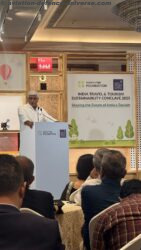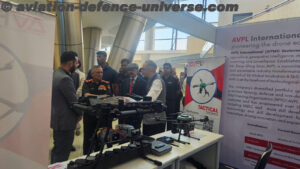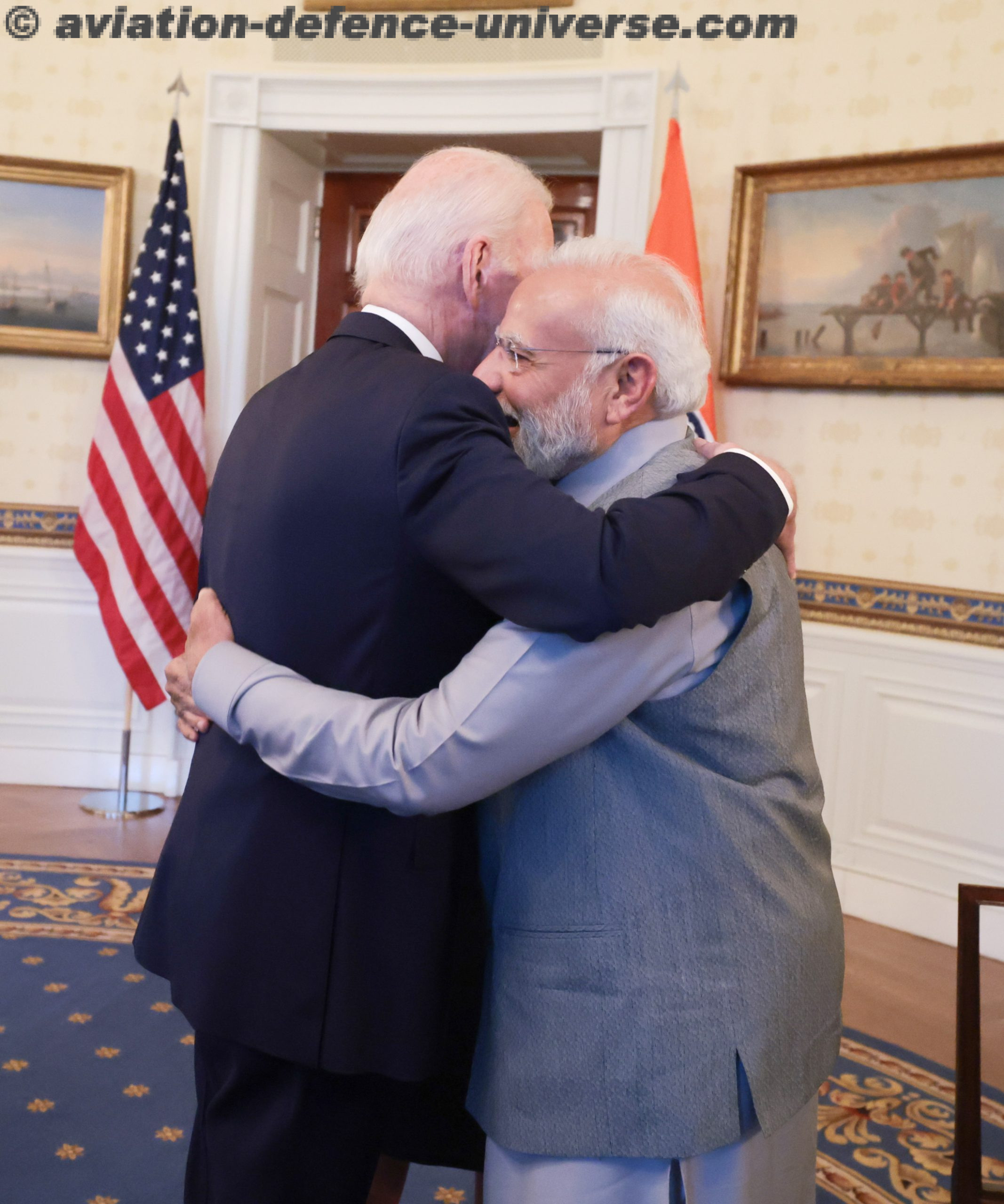
- India also on a defence procurement & collaboration drive
By Sangeeta Saxena
Paris. 23 June 2023. The alliance between India and the United States has emerged as a crucial factor in reshaping the defence environment in a time of growing global security threats. The trip to the United States by Prime Minister Narendra Modi to meet with President Joe Biden marks an important step in strengthening the defence ties between these two countries. The leaders’ strategic conversations centred on promoting collaboration, advancing military interoperability, and tackling shared security issues.
With its significant geopolitical influence and expanding economic might, India has rapidly emerged as a major force in the world of defence. The country has emerged as a crucial ally in maintaining global security thanks to its broad military capabilities and dedication to regional stability and counterterrorism initiatives.
On the other hand, the United States has a well-established reputation as a global superpower for its powerful defence capabilities and dedication to maintaining international peace. The United States has historically attempted to establish alliances and partnerships around the world in order to efficiently manage complex security concerns thanks to its huge resources, cutting-edge technologies, and extensive military reach.
India and the United States have stepped up their efforts to deepen their defence ties in recent years, recognising the shared principles of democracy, dedication to a world founded on rules, and shared security concerns. The mutual goal of promoting peace, security, and prosperity in the area and beyond serves as the cornerstone of the strategic partnership between the two nations.
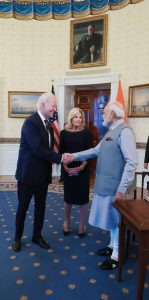
Prime Minister Modi and President Biden discussed a range of topics at length during their high-level meetings, including the transfer of defence technology, cooperative military exercises, intelligence sharing, and maritime security. The talks aimed to increase strategic coordination, promote defence commerce, and improve the interoperability of their armed forces in order to successfully combat new threats like terrorism, cyberattacks, and regional instabilities.
The importance of India and the United States’ growing defence ties is underscored by the world’s extraordinary security concerns and geopolitical changes. This growing alliance advances both countries’ security objectives while also promoting peace and stability throughout the Indo-Pacific and beyond. Modi recalled, “ we were strangers in defence cooperation at the turn of the century. Now, the United States has become one of our most important defence partners.” Some of the decisions taken during this visit are highlighted here.
Next-Generation Defense Partnership:
GE F414 Engine Co-Production: The United States and India welcome a groundbreaking proposal by General Electric (GE) to jointly produce the F414 Jet Engine in India. GE and Hindustan Aeronautics Limited have signed a MoU, and a manufacturing license agreement has been submitted for Congressional Notification. This trailblazing initiative to manufacture F-414 engines in India—the first of its kind—will enable greater transfer of U.S. jet engine technology than ever before.
General Atomics MQ-9Bs: India intends to procure armed MQ-9B SeaGuardian UAVs. This advanced technology will increase India’s intelligence, surveillance, and reconnaissance capabilities.
New Sustainment and Ship Repair: The United States Navy has concluded a Master Ship Repair Agreement (MSRA) with Larsen and Toubro Shipyard in Kattupalli (Chennai) and is finalizing agreements with Mazagon Dock Limited (Mumbai) and Goa Shipyard (Goa). These agreements will allow mid-voyage U.S. Navy ships to undergo service and repair at Indian shipyards, facilitating cost-effective and time-saving sustainment activites for U.S. military operations across multiple theaters.
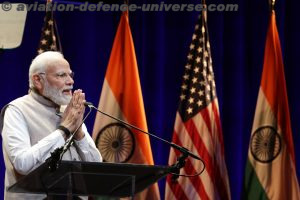
More Robust Defense Cooperation: The United States and India advanced steps to operationalize tools that will allow us to increase our defense cooperation. The United States and India resolved to strengthen undersea domain awareness cooperation. The agreement to place three Indian liaison officers in U.S. commands for the first time– deepening our partnership and critical information sharing. The United States and India have also commenced negotiations for a Security of Supply Arrangement and Reciprocal Defense Procurement Arrangement that will enable the supply of defense goods in the event of unanticipated supply chain disruptions. The United States and India finalized a Defense Industrial Cooperation Roadmap that provides policy direction to defense industries and enables co-production of advanced defense systems as well as collaborative research, testing, and prototyping of the technologies that will determine the future of military power.
Defense “Innovation Bridge”: The India-U.S. Defense Acceleration Ecosystem (INDUS-X)—a network of university, incubator, corporate, think tank, and private investment stakeholders—was inaugurated on June 21, 2023. This innovative program will facilitate joint innovation on defense technologies and accelerate the integration of India’s budding private sector defense industry with the U.S. defense sector.
Defense Industrial Cooperation Roadmap: A new defense industrial cooperation roadmap will provide policy direction to defense industries to enable and accelerate the co-production of advanced defense systems as well as collaborative research, testing, and prototyping of the technologies that will determine the future of military power.
Prime Minister Modi stated, “ The last few years have seen deeply disruptive developments. With the Ukraine conflict, war has returned to Europe. It is causing great pain in the region. Since it involves major powers, the outcomes are severe. Countries of the Global South have been particularly affected. The global order is based on the respect for the principles of the UN Charter, peaceful resolution of disputes, and respect for sovereignty and territorial integrity. As I have said directly and publicly, this is not an era of war. But, it is one of dialogue and diplomacy. And, we all must do what we can to stop the bloodshed and human suffering. Mister Speaker, The dark clouds of coercion and confrontation are casting their shadow in the Indo Pacific. The stability of the region has become one of the central concerns of our partnership.”
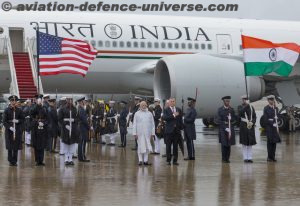
He was addressing the Joint Session of US Congress. “We share a vision of a free, open and inclusive Indo Pacific, connected by secure seas, defined by international law, free from domination, and anchored in ASEAN centrality. A region where all nations, small and large, are free and fearless in their choices, where progress is not suffocated by impossible burdens of debt, where connectivity is not leveraged for strategic purposes, where all nations are lifted by the high tide of shared prosperity. Our vision does not seek to contain or exclude, but to build a cooperative region of peace and prosperity. We work through regional institutions and with our partners from within the region and beyond. Of this, Quad has emerged as a major force of good for the region,” he reiterated.
Modi also reminded, “More than two decades after 9/11 and more than a decade after 26/11 in Mumbai, radicalism and terrorism still remain a pressing danger for the whole world. These ideologies keep taking new identities and forms, but their intentions are the same. Terrorism is an enemy of humanity and there can be no ifs or buts in dealing with it. We must overcome all such forces sponsoring and exporting terror.”
According to data reviewed between 2017 and 2022, Russia still represents a sizable portion of India’s total arms imports, at 45%. The US sees an opportunity in the fact that until 2016, Moscow held a 65% share of the market.








































